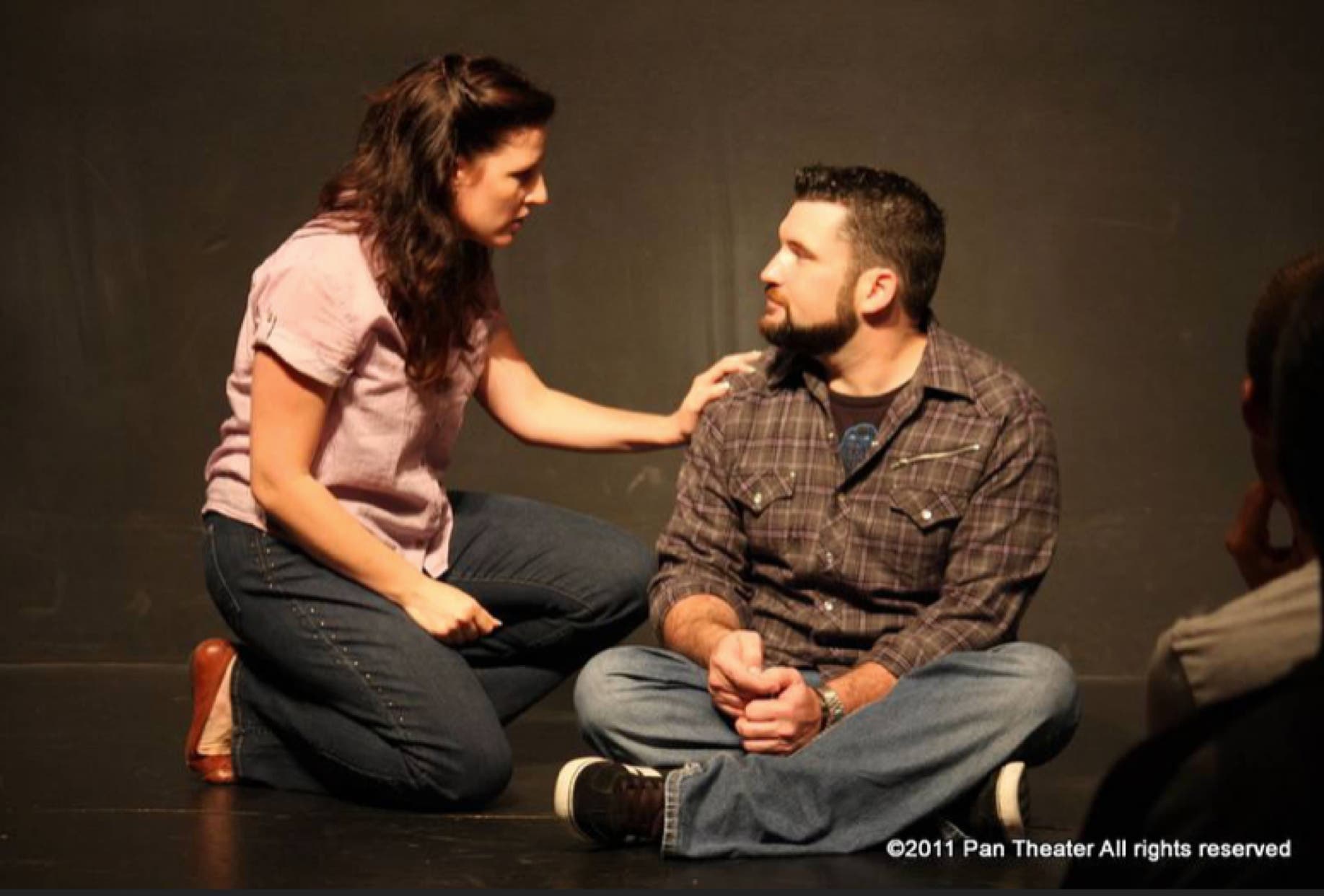
Pan Theater - 2011
Meisner Technique and Improv Acting
Living Truthfully, Improvising Emotionally
I've been putting off writing this article for several years.
Now it is time.
Meisner Technique is a wonderful and powerful thing.
It can change your life and change your improv.
“Acting is living truthfully under imaginary circumstances. They are all imaginary circumstances. You think Hamlet was real? It’s about the emotional circumstances.”
Sanford Meisner
Those last lines are a poor paraphrase of one of Sanford Meisner's points. If you want the exact quote, check out the documentary: Sandford Meisner: the American Theatre’s Best Kept Secret.
Meisner technique is about improvising emotionally. Rather than focusing on story, the actors connect and work off of and glue to each other emotionally.
The acting becomes pure reacting to each other. Eventually, as the actors develop skill with the hardest part, the easier parts are added.
Story, character, wants and needs and layers are developed. Impediments, emotional prep, strongest need and other skills and exercises are used.
Repetition: the foundation exercise
the first part—learning to connect, listen, and work off each other—evolves from the repetition exercise.
The goal is to really listen.
You’re standing there.
I'm standing there.
You're standing there.
I'm standing there.
You’re standing there.
You don't like that.
I don't like that.
You don't like that.
You're being smug.
You're amused by that...
One actor makes a simple truthful statement about the other. The statement is based on that moment and from the actor’s point of view.
The other actor repeats and the repetition continue until one actor notices something new.
It isn't about being interesting, funny, or entertaining. It is about identifying the first impulse and not filtering it.
The thing that you notice coming from your partner is what matters. It should be something meaningful, and important. About the connection
Focusing on the other allows the actors not to be limited by self-consciousness. Focusing on the other actor allows you to accept your self-consciousness and move beyond it.
The throwing of focus creates connection and allows us to be changed by the things we notice.
I had the pleasure and privilege of taking the basic course several times. For an improviser, all of the technique is useful, but the basic foundation exercise does the most for improv actors.
So, you ask, how do we use it in improv?
Sometimes the exercise can be used directly in a scene. An actor can take an “emotional reading” reading of the other.
The introduction of the repetition or emotional reading can reconnect the characters (actors).
More often the usefulness of the technique is in how it changes you as a performer. The increased comfort and the ability to live moment to moment help create a improv that is grounded.
The awareness of how you feel, of your point of view, of what the other is doing. The acceptance of the moment and the emotion help us discover rather than invent the scene.
This ability to go moment to moment helps ground the performers.
Exercises like the Repetition Exercise,Viola Spolin's Mirror Exercise, Space Walk and Sound Ball create a solid foundation for your improv acting practice.
Improv is acting on Impulse (see the book: Acting on Impulse). It can also be acting on emotional impulse within the given circumstances.
I'm done.
You’re done??
No really, I'm done.
Recommended Books:
Sanford Meisner on Acting
by Dennis Longwell
Actor's Art and Craft: William Esper Teaches the Meisner Technique
by William Esper
Acting on Impulse
by Carol Hazenfield
Improvisation for the Theater
by Viola Spolin
Games for the Lone Actor
by Viola Spolin (especially scoring.)
Video:
Sanford Meisner: -The American Theatre’s Best Kept Secret
Recommended Articles
Rules of Improv I
Pan Theater